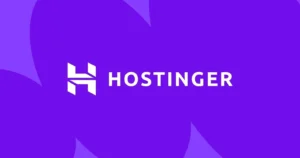What is Gutenberg? Understanding the WordPress Block Editor
Gutenberg is the project name for the modern WordPress content editor, officially known as the Block Editor. Introduced as the default editor in WordPress 5.0 (December 2018), Gutenberg represents a fundamental shift from the previous “Classic Editor” (which resembled a traditional word processor). Instead of a single content field, Gutenberg uses a modular approach where everything is a distinct “block,” offering a more visual and structured way to create content and layouts.
Read also : Minecraft Server Hosting Explained
Table of Contents
The Core Concept: Everything is a Block
Understanding blocks is key to understanding Gutenberg. Each piece of content is its own block:
- Paragraph Block
- Heading Block
- Image Block
- List Block
- Quote Block
- Gallery Block
- Button Block
- Video Block
- Columns Block
- Spacer Block
- And many more…
You add blocks using the +inserter button, arrange them by dragging or using mover arrows, and customize each block’s specific settings (like text size, color, alignment, image dimensions) in the right-hand sidebar.
Key Features and Benefits
Visual Layout Building: Directly manipulate blocks to create more complex layouts (like multi-column designs using the Columns block) without needing HTML or shortcodes for many common scenarios.
Content Structure: The block system inherently encourages more structured content compared to the single field of the Classic Editor.
Rich Media Handling: Improved embedding and styling options for images, galleries, videos, cover images, and embeds from various sources (YouTube, Twitter, etc.).
Reusable Blocks (Synced Patterns): Save any block or group of blocks you’ve customized and reuse them across your site. Editing the original reusable block updates all instances automatically – perfect for CTAs or standard disclaimers.
Block Patterns: Insert pre-designed collections of blocks as starting points for sections or layouts. Unlike Reusable Blocks, patterns are independent once inserted. Themes and plugins often provide custom patterns.
Extensibility: Developers can easily create custom blocks, integrating unique features directly into the editor flow.
Foundation for Full Site Editing (FSE): The block concept extends beyond post/page content in Block Themes, allowing visual editing of headers, footers, and entire site templates using blocks.
Read also : InMotion Hosting Review
Gutenberg vs. the Classic Editor
The main difference lies in the approach:
- Classic Editor: One continuous text field with a formatting toolbar, similar to Microsoft Word or Google Docs. Required HTML/shortcodes for anything beyond basic text formatting and image insertion.
- Gutenberg (Block Editor): Modular system where each content element is a separate block. More visual control over layout and structure directly within the editor. Reduces the need for simple HTML/shortcodes.
While some users initially preferred the simplicity of the Classic Editor (which can still be installed via a plugin), Gutenberg offers significantly more power and flexibility for modern web content creation and is the future direction of WordPress.
Leverage the Gutenberg Block Editor with WebDest
Mastering the Gutenberg Block Editor unlocks powerful content creation possibilities. WebDest can help you harness its full potential, from basic block usage to creating custom blocks and leveraging Full Site Editing features.
Our Gutenberg & Block Editor Services:
- ✓ Gutenberg Training & Workflow Optimization
- ✓ Custom Block Development
- ✓ Block Theme Development & FSE Implementation
- ✓ Converting Classic Content/Themes to Blocks
- ✓ Page Builder to Gutenberg Migration
Conclusion: Embracing the Block Editor
The WordPress Block Editor is more than just an editor; it’s a fundamental shift toward a more visual, flexible, and component-based way of building websites with WordPress. By embracing blocks, users gain greater control over layout and design directly within WordPress, paving the way for advanced features like Full Site Editing.
Read also : Namecheap Hosting Review




